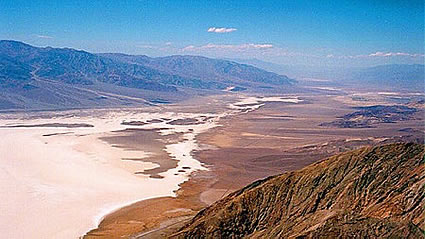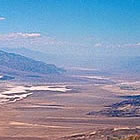Snowbirds heading home—Part I
As seasons change, these travellers make their way north

So you have enjoyed day after day of warm sunshine in southwest USA this past winter, and as the seasons begin to change it is time to prepare for the trip home. The snow is starting to melt in the northern latitudes and daytime temperatures are, well, not quite balmy but tolerable. When you do make that trip back home you might want to make a few short stops along the way for some end-of-winter sightseeing. We have been to many of these places and would like to share them with you.
From California via an eastern route
This is the way we travelled to Alaska from southern Nevada in spring. The first stop was Death Valley National Park. The visitor centre is the place to go to find out what’s happening. From San Bernardino, take I-215 to I-15 north and travel twenty-eight miles (45 kilometres) to US395 north, to Olancha and US190. Scotty’s Castle is a must-see and the tale behind it is worth hearing (see our article published in RVwest in 2007 titled Wanderings in the Desert). Plan on spending the night at one of the campgrounds in the park. If you have a pickup or a towed vehicle, unhitch and take the road through Titus Canyon. It is a white knuckle drive but it is awesome. Explore the park, there is much to see. Check out the museum, small and crammed full. Drive up to the Ubehebe Crater. You won’t get close to a volcanic crater like this very often.
Geological wonders
When you have seen enough, head north through the park on US190 and pick up US395 North. Not far from Lone Pine, you will come to CA120—leading to Yosemite National Park at Lee Vining. Yosemite supports a diversity of plants and animals and contains five major vegetative zones: chaparral/oak woodland; lower montane; upper montane; subalpine and alpine.
The elevations here range from 2,000 feet (610 metres) to 13,114 feet (3,997 metres). Of California’s 7,000 plant species, about 50 per cent occur in the Sierra Nevada and more than 20 per cent within Yosemite. Land forms are cut from the granite rock of the Sierra Nevada Mountains. Half Dome, El Capitan and Sentinel Rock were created by cross joints in the rock. In the valleys, you will find three groves of ancient Giant Sequoia trees. Yosemite is famous for its high concentration of waterfalls. Horseshoe Falls is exhilarating and there are also 3,200 lakes in the park. It is truly a fascinating place.
An unusual ecosystem
Take CA120 east back to US395 and go a short distance to Mono Lake, an alkaline and supersaline lake that has crystal formations (tufa towers) growing up out of the water. This is an unusually productive ecosystem and also a critical nesting habitat for birds. You can walk along the lake shore and get a close-up look at the tufa towers. Soon you will wonder if “Scotty” beamed you up onto another planet or perhaps the moon.
Getting back onto US395 North, you will pass through Reno. You can stop here and try to pay for your winter vacation. Just don’t blow the last of your fuel money on the slots. Continue on to Susanville and head for Lassen Volcanic National Park on CA44. It has a great Visitor Center and a fascinating hike up the volcanic glass trail. The dominant feature of this park is Lassen Peak, the largest plug volcano in the world. There are also boiling mud pots, stinking fumaroles and churning hot springs. When you are all done, stay on CA44 West to I-5 North and join the tail end of the western route, which we will detail in Part II of this series.








